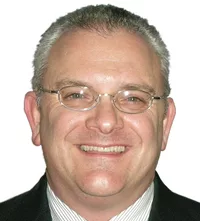In the first article in this series, we discussed New Age competitors and the Commodity Skirmish Line as wholesalers move online. In this part of the series, we’ll look at the vulnerability of full-service/traditional distributors’ customer portfolio — the structural risk to the growing concern. Fundamental to the understanding of the digitization of PHCP channels, is the role of technology in driving change. Initially, wholesaler executives viewed e-commerce as a transaction enhancement. That is, the technology allowed transactions to be placed asynchronous with demand and, in many instances, without sales assistance. However, as the technology has matured, we find many New Age entities who use it as a disruptive force. These companies strip out significant parts of full-service distribution’s service platform including much of the sales and branch complement while offering a limited service platform. These businesses can reduce infrastructure costs, over full-service distribution, to place 8 percent to 12 percent of sales to the operating profit line while reducing prices a similar amount. They are profligate in most distribution sectors and, along with manufacturer direct shipments, are growing sales faster than traditional distribution.
Full-service, traditional distributors are being assailed by newly created firms that use online technology as a competitive advantage. Hence, full-service/traditional distributors will need to carefully consider how to change parts of the full-service platform to compete with efficiency while protecting their existing value proposition. Our recommendations on engaging this change is to analyze and review, carefully, before making changes. Many of the changes will be to people, positions, and branches. They are not easily reversed once enacted.
Where inefficiency and vulnerability exist
Three primary areas of inefficiency and vulnerability exist in the number of branches, sales support, and the service platform. These parts of the firm have been carried over from a prior age when supply chain information and function were less accurate and timely. The need for numerous sellers and branches existed before e-commerce. Today, however, the end buyer has almost perfect information in the supply chain. They can get satisfactory service on commodity products without sellers and numerous “close-in” branches. Therefore, these areas will need to be reviewed for redundancies.
Important to the understanding of customer portfolio risk in full service distribution is that approximately 40 percent of distributor accounts (A Accounts) provide the majority (137 percent) of operating income for the firm while 20 percent (B Accounts) of accounts are nominally profitable at (25 percent) of operating profit and 40 percent (C Accounts) destroy (142 percent) operating profit. The prior statement has, more than less, been confirmed by customer-based activity costing for several decades. The top 40 percent of customers are open to their commodities being won away by New Age competitors who specialize in rote products and a low-cost platform. Our analysis of a typical distribution firm finds that targeting the commodities of the top 40 percent of activity profit accounts can wipe out up to 80 percent of all operating profits. This translates to 15 percent or so of top-line sales volume being responsible for the financial-health of the firm. Our review of the strategies of New Age competitors is that they understand this “Achilles-heel” of full-service distribution and are targeting their efforts to exploit it. We believe that the next decade will be one in where traditional distributors will need to lean out their full-service platform or risk disruption.
To illustrate the financial vulnerability of the typical full-service distributor, we’ve included Exhibit I which is an overview of the 2017 income statement of Dolan’s Plumbing Supply. In 2017, Dolan sold $100 million at a 23 percent gross margin and 20 percent of sales operating expenses for a net profit of $3 million.
Under the heading, Activity Based/Select Account Stats, we find that there are 12,000 credit accounts at Dolan with an activity breakeven of $5,000 per year. The breakeven is the median annual sales where accounts become activity positive. Taking 40 percent of top activity (A) accounts gives us 4800 which are 137 percent of activity profits or $4.11 million (1.37 x 3 million). Since 60 percent of Dolan’s products are commodities, they are part of the Commodity Skirmish Line discussed in Part One of the series. The commodity sales for A customers generates $2.4 million in activity profits (.6 x $4.11 million) and this is 80 percent of the operating profits of Dolan for 2017 ($2.4 million/$3 million). Furthermore, the A account commodities are approximately $14.4 million (4800 x $5000x.6) or 14 percent of Dolan’s total sales. In other words, New Age firm(s) targeting 14 percent of sales or the commodity purchases of Dolan’s A customers can, in large measure, wipe out 80 percent of operating profits for the year. Consequently, the distribution firm is vulnerable to low-cost, online competitors who target commodity purchases of the top 40 percent accounts.
While it is difficult for these competitors to know who the large accounts are, activity profitability closely follows large order sizes and our research into New Age competitors finds that they offer pricing discount brackets or scaled pricing for large order sizes. The upshot is that traditional distribution is a model that will need significant change to defend against low-cost online competitors. Conversely, we expect some distributors to develop proprietary low-cost entities and work to get sales from their competitor’s larger, top activity profit accounts.
To defend against these New Age competitors and protect their customer portfolio, traditional distributors will need to use e-commerce to “lean out” the existing platform including the sales force and branch locations. We will discuss this in the next installment.





